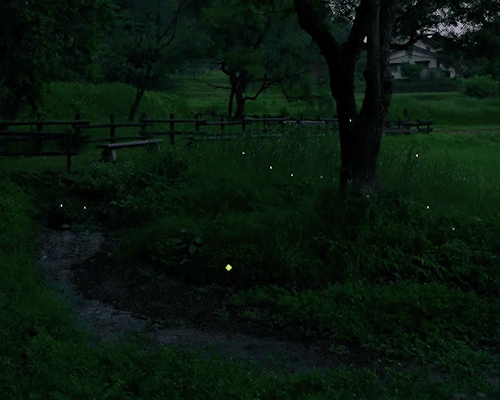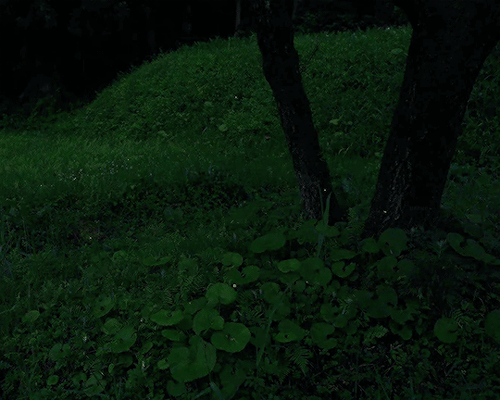♡




♡
More Posts from Csmsdust and Others

Unusual antibiotic killing mechanism we just published in Nature
Our study about the unusual molecular mechanism behind the antibiotic activity of teixobactin can be read open access here:
https://www.nature.com/articles/s41586-022-05019-y

Figure: The target of teixobactin are bacteria-specific molecules (e.g. they do not exist in human cells) in outer membranes of bacteria. Teixobactin sits on the membrane and aggregates into fibrils, damaging the bacterial membrane and hindering its functions. We got these images by atomic force microscopy that has nanometer resolution. We can see individual teixobactin molecules coming to the bacterial membrane and forming the aggregate.
This is the first star from my research on antibiotics that I started at my postdoc in the Netherlands. More are coming out soon! The very first star was published in Nature, the most read journal in life sciences. I am in scientific heaven!

Slime Molds and Intelligence

Okay, despite going into a biology related field, I only just learned about slime molds, and hang on, because it gets WILD.
This guy in the picture is called Physarum polycephalum, one of the more commonly studied types of slime mold. It was originally thought to be a fungus, though we now know it to actually be a type of protist (a sort of catch-all group for any eukaryotic organism that isn't a plant, animal, or a fungus). As protists go, it's pretty smart. It is very good at finding the most efficient way to get to a food source, or multiple food sources. In fact, placing a slime mold on a map with food sources at all of the major cities can give a pretty good idea of an efficient transportation system. Here is a slime mold growing over a map of Tokyo compared to the actual Tokyo railway system:

Pretty good, right? Though they don't have eyes, ears, or noses, the slime molds are able to sense objects at a distance kind of like a spider using tiny differences in tension and vibrations to sense a fly caught in its web. Instead of a spiderweb, though, this organism relies on proteins called TRP channels. The slime mold can then make decisions about where it wants to grow. In one experiment, a slime mold was put in a petri dish with one glass disk on one side and 3 glass disks on the other side. Even though the disks weren't a food source, the slime mold chose to grow towards and investigate the side with 3 disks over 70% of the time.

Even more impressive is that these organisms have some sense of time. If you blow cold air on them every hour on the hour, they'll start to shrink away in anticipation when before the air hits after only 3 hours.
Now, I hear you say, this is cool and all, but like, I can do all those things too. The slime mold isn't special...
To which I would like to point out that you have a significant advantage over the slime mold, seeing as you have a brain.
Yeah, these protists can accomplish all of the things I just talked about, and they just... don't have any sort of neural architecture whatsoever? They don't even have brain cells, let alone the structures that should allow them to process sensory information and make decisions because of it. Nothing that should give them a sense of time. Scientists literally have no idea how this thing is able to "think'. But however it does, it is sure to be a form of cognition that is completely and utterly different from anything that we're familiar with.




Hunter gatherer, prying open the seeds, got curious enough, started peeling its own skin, digging underneath, born with scars on your hands, stardust, sun sent, the first flesh you ever tasted, your own, folded flesh underneath the bone, and two eyes gazing in oblivion, oblivious of obvious
“You look at trees and called them ‘trees,’ and probably you do not think twice about the word. You call a star a ‘star,’ and think nothing more of it. But you must remember that these words, ‘tree,’ ‘star,’ were (in their original forms) names given to these objects by people with very different views from yours. To you, a tree is simply a vegetable organism, and a star simply a ball of inanimate matter moving along a mathematical course. But the first men to talk of ‘trees’ and ‘stars’ saw things very differently. To them, the world was alive with mythological beings. They saw the stars as living silver, bursting into flame in answer to the eternal music. They saw the sky as a jeweled tent, and the earth as the womb whence all living things have come. To them, the whole of creation was ‘myth-woven and elf patterned’.”
— J.R.R. Tolkien, from ‘Mythopoeia’
-
 an-oldsoul reblogged this · 1 week ago
an-oldsoul reblogged this · 1 week ago -
 wolvenmaiden reblogged this · 1 week ago
wolvenmaiden reblogged this · 1 week ago -
 richonnefan50 reblogged this · 1 week ago
richonnefan50 reblogged this · 1 week ago -
 lynllow liked this · 1 week ago
lynllow liked this · 1 week ago -
 eliseeatydendivu liked this · 1 week ago
eliseeatydendivu liked this · 1 week ago -
 wallflowerglitter reblogged this · 1 week ago
wallflowerglitter reblogged this · 1 week ago -
 angelbunies reblogged this · 1 week ago
angelbunies reblogged this · 1 week ago -
 lidsquid reblogged this · 1 week ago
lidsquid reblogged this · 1 week ago -
 itsytwistedspinne reblogged this · 1 week ago
itsytwistedspinne reblogged this · 1 week ago -
 yourgreetings liked this · 1 week ago
yourgreetings liked this · 1 week ago -
 beetlesjelly reblogged this · 1 week ago
beetlesjelly reblogged this · 1 week ago -
 glitteringroseangel reblogged this · 1 week ago
glitteringroseangel reblogged this · 1 week ago -
 glitteringroseangel liked this · 1 week ago
glitteringroseangel liked this · 1 week ago -
 tulips-andboww reblogged this · 1 week ago
tulips-andboww reblogged this · 1 week ago -
 tulips-andboww liked this · 1 week ago
tulips-andboww liked this · 1 week ago -
 flint-lockwuud reblogged this · 1 week ago
flint-lockwuud reblogged this · 1 week ago -
 sleepyvib-es liked this · 1 week ago
sleepyvib-es liked this · 1 week ago -
 sergeidrgjks liked this · 1 week ago
sergeidrgjks liked this · 1 week ago -
 whocares94x reblogged this · 1 week ago
whocares94x reblogged this · 1 week ago -
 tina904x liked this · 1 week ago
tina904x liked this · 1 week ago -
 localpepsienthusiast reblogged this · 1 week ago
localpepsienthusiast reblogged this · 1 week ago -
 tiger-feather liked this · 1 week ago
tiger-feather liked this · 1 week ago -
 smolderingwebqueen liked this · 1 week ago
smolderingwebqueen liked this · 1 week ago -
 nikblogs-stuff liked this · 1 week ago
nikblogs-stuff liked this · 1 week ago -
 autumnwind-autumnsky reblogged this · 1 week ago
autumnwind-autumnsky reblogged this · 1 week ago -
 villianz8080 liked this · 1 week ago
villianz8080 liked this · 1 week ago -
 sushiandcoke liked this · 1 week ago
sushiandcoke liked this · 1 week ago -
 nnesset reblogged this · 1 week ago
nnesset reblogged this · 1 week ago -
 nnesset liked this · 1 week ago
nnesset liked this · 1 week ago -
 lilacrainn liked this · 1 week ago
lilacrainn liked this · 1 week ago -
 19august2000 reblogged this · 1 week ago
19august2000 reblogged this · 1 week ago -
 mrvampirewkend reblogged this · 1 week ago
mrvampirewkend reblogged this · 1 week ago -
 imdarklizard liked this · 1 week ago
imdarklizard liked this · 1 week ago -
 roman-604 liked this · 1 week ago
roman-604 liked this · 1 week ago -
 foreverrfunn liked this · 1 week ago
foreverrfunn liked this · 1 week ago -
 ursunshin333 liked this · 1 week ago
ursunshin333 liked this · 1 week ago -
 brokendiamondz liked this · 1 week ago
brokendiamondz liked this · 1 week ago -
 raspberrie liked this · 1 week ago
raspberrie liked this · 1 week ago -
 cloverfieldaspen liked this · 1 week ago
cloverfieldaspen liked this · 1 week ago -
 but-flowers-are-pretty reblogged this · 1 week ago
but-flowers-are-pretty reblogged this · 1 week ago -
 ueropean liked this · 1 week ago
ueropean liked this · 1 week ago -
 perlad4as reblogged this · 1 week ago
perlad4as reblogged this · 1 week ago -
 perlad4as liked this · 1 week ago
perlad4as liked this · 1 week ago -
 rivercreature liked this · 1 week ago
rivercreature liked this · 1 week ago -
 sundaysamsara liked this · 1 week ago
sundaysamsara liked this · 1 week ago -
 0jellyfish-star0 liked this · 1 week ago
0jellyfish-star0 liked this · 1 week ago -
 snowdropskylark reblogged this · 1 week ago
snowdropskylark reblogged this · 1 week ago -
 tinydragonnightmare liked this · 1 week ago
tinydragonnightmare liked this · 1 week ago -
 happy-utraviolence reblogged this · 1 week ago
happy-utraviolence reblogged this · 1 week ago




